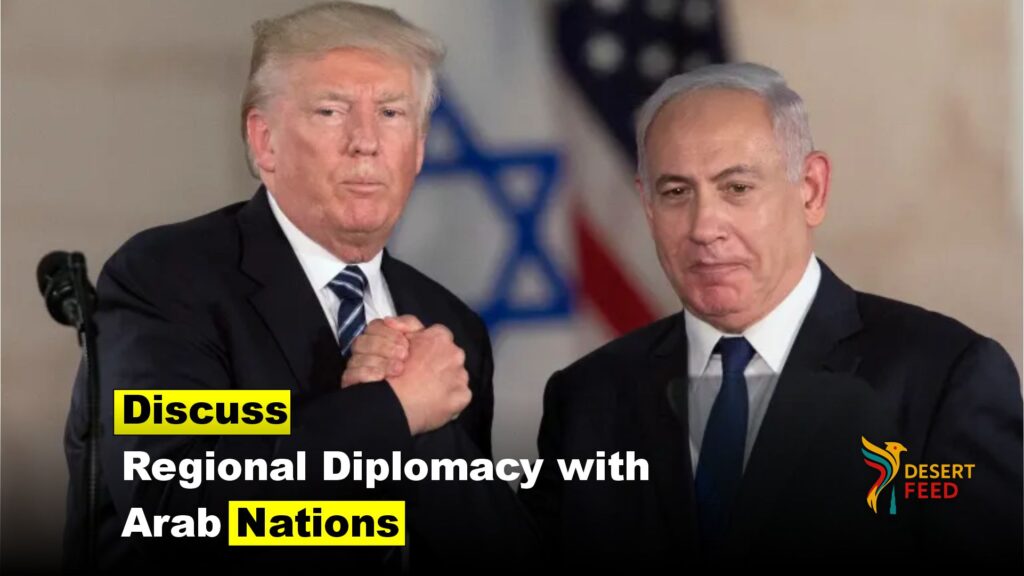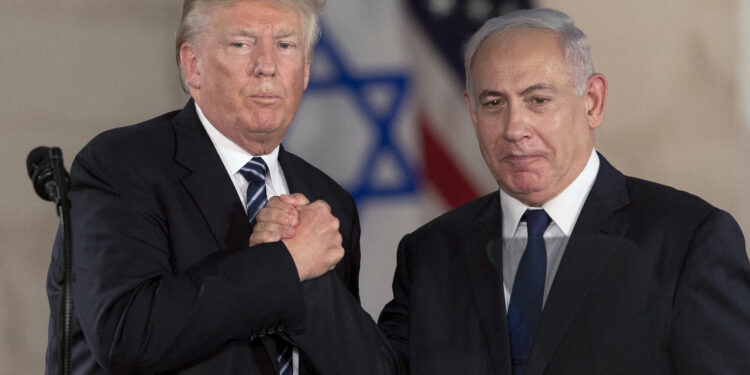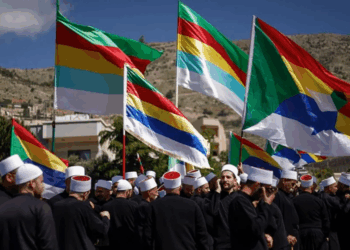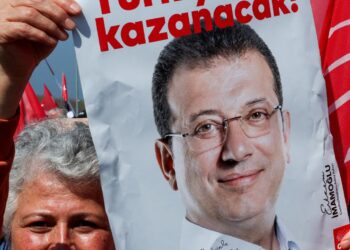In a rapidly evolving diplomatic landscape, Israeli Prime Minister Benjamin Netanyahu arrived at the White House on Monday to meet with U.S. President Donald Trump, as the world watches closely for a possible ceasefire in Gaza. This high-stakes visit aligns with ongoing indirect talks between Israel and Hamas in Doha, Qatar, aimed at brokering a 60-day ceasefire deal mediated by the United States.
With nearly two years of war, unprecedented casualties, and regional tension, the discussions carry significant weight. Leaders from both nations are optimistic that this may finally pave the way for peace in Gaza and broader stability in the Middle East.
At Desert Feed, we break down what this historic meeting could mean for Gaza, Israel, Iran, and the region’s future.
The Purpose of Netanyahu’s Visit to Washington
Prime Minister Netanyahu’s latest visit to the White House is his third official meeting with President Trump since Trump returned to office in January 2025. The meeting is not only a demonstration of the close U.S.-Israel alliance, but also a moment to address:
-
The status of the Gaza ceasefire negotiations
-
The aftermath of the Israel-Iran war
-
Future prospects for regional diplomacy with Arab nations
-
Continued concerns over Iran’s nuclear program
This visit comes after Trump ordered a series of U.S. airstrikes on Iranian nuclear sites, which contributed to ending a brief 12-day military conflict between Israel and Iran. Netanyahu is expected to personally thank Trump for the strikes and align future security goals.

Progress in Gaza Talks: A Ray of Hope?
While Netanyahu engages with Trump in Washington, Israeli representatives are holding indirect negotiations with Hamas in Doha—with mediation from Qatar and Egypt. The central goal: to achieve a U.S.-brokered 60-day ceasefire that includes a phased hostage release, Israeli troop withdrawal from parts of Gaza, and the groundwork for a permanent end to the war.
According to Israeli officials, the talks are progressing positively. A senior official confirmed that the “atmosphere is cautiously optimistic,” although no final agreement has been reached yet. On the other hand, Palestinian negotiators have described the initial sessions as inconclusive but acknowledged a willingness to continue.
The main points of contention include:
-
The order and timing of hostage releases
-
Guaranteeing humanitarian aid entry
-
Security conditions post-ceasefire
-
Hamas’s demand for a complete end to the war
Why This Ceasefire Matters More Than Ever
The Gaza war, which erupted in October 2023, began with a surprise attack by Hamas in southern Israel that killed over 1,200 people and led to 251 hostages being taken. Since then, Israel’s response has resulted in over 57,000 Palestinian deaths, according to Gaza’s Health Ministry.
The humanitarian cost has been catastrophic:
-
Over 2 million people displaced
-
Infrastructure in shambles
-
Famine looming for nearly 500,000 people
-
Access to food, water, and medical aid severely limited
Citizens on both sides are increasingly desperate for peace.
“We want a ceasefire that actually stops the bloodshed,” said Mohammed Al Sawalheh, a displaced Palestinian from Jabalia, speaking to Reuters.
The ceasefire could be a turning point in ending the 21-month conflict, or at least offer temporary relief for civilians trapped in an endless war.
Trump’s Role as Mediator and Influencer
President Trump has placed the full weight of the U.S. government behind brokering the ceasefire. On Friday, he noted that Hamas had responded “in a positive spirit” to the latest American proposal.
Trump’s vision includes:
-
Short-term de-escalation
-
Long-term disarmament of Hamas
-
A framework for Israeli-Arab normalization
The President also tied the potential success of the deal to regional diplomacy, stating that peace in Gaza could lead to deeper partnerships with Saudi Arabia, Lebanon, and Syria—a goal echoed by Israeli ministers.
“This may be our moment to redefine the Middle East,” said Avi Dichter, a senior Israeli official, in an interview with Kan public radio.
Israel-Iran Conflict: Fallout and Opportunity
In June, escalating tensions between Israel and Iran exploded into a brief but deadly 12-day war, halted by U.S. airstrikes on Iranian nuclear facilities. The strikes, ordered by Trump, were hailed as a strategic success.
Netanyahu is expected to publicly thank Trump during the White House meeting and coordinate future actions against Iran. Trump has claimed that Iran’s nuclear program has been “permanently set back,” though intelligence sources warn that Tehran may relocate its operations.
Iran’s Response
Iran has consistently denied pursuing nuclear weapons, calling its program peaceful. However, Trump declared, “Iran will not be allowed to restart nuclear development under my watch,” adding that Iranian officials had requested backchannel communication.
Domestic Politics: Netanyahu’s Coalition Faces Pressure
Inside Israel, Netanyahu faces pressure from both sides of the political spectrum. Some hardline coalition members oppose a ceasefire unless Hamas is dismantled completely. Others, including members of the Israeli public, are exhausted by the prolonged war and support a diplomatic solution.
Adding to the complexity, Netanyahu is still undergoing a corruption trial on charges of bribery, fraud, and breach of trust—charges he denies. Trump has publicly criticized Israeli prosecutors, drawing parallels to his own legal challenges in the U.S. and claiming judicial interference hinders effective governance.
Humanitarian Aid and Security Guarantees
Another major talking point in both the Washington meeting and the Doha negotiations is the delivery of humanitarian aid. Israeli officials say the topic has been addressed, but implementation remains uncertain.
Aid organizations have called for:
-
Unhindered access to all parts of Gaza
-
Security for humanitarian convoys
-
Immediate medical supplies for hospitals
-
Rebuilding efforts post-ceasefire
The United Nations and international NGOs are standing by, awaiting confirmation of a formal ceasefire before deploying large-scale relief efforts.
What’s Next? Key Takeaways from the Netanyahu-Trump Meeting
As the diplomatic dust settles, here are the major developments to watch:
-
Will Hamas and Israel finalize the ceasefire this week?
-
Will the hostage release process begin during the 60-day truce?
-
How will regional actors like Saudi Arabia respond to normalization efforts?
-
What further role will the U.S. play in monitoring post-ceasefire compliance?
-
Will Iran escalate or soften its stance in response to international pressure?
Desert Feed will continue to monitor these evolving questions and provide real-time analysis and updates.
Final Thoughts: A Defining Week for the Middle East
The coming days could prove historic. If the ceasefire materializes and hostage releases proceed, it will not only offer hope to the millions affected by the war—but also set the stage for a new diplomatic era in the Middle East.
The Netanyahu-Trump summit signals more than just a political handshake. It’s a statement of intent: to move from crisis to peace, from retaliation to resolution.
But will intentions become actions? That remains to be seen.
Stay Connected with Desert Feed
For more insights, expert opinions, and the latest breaking news on Middle Eastern politics and international affairs, stay connected with Desert Feed.






